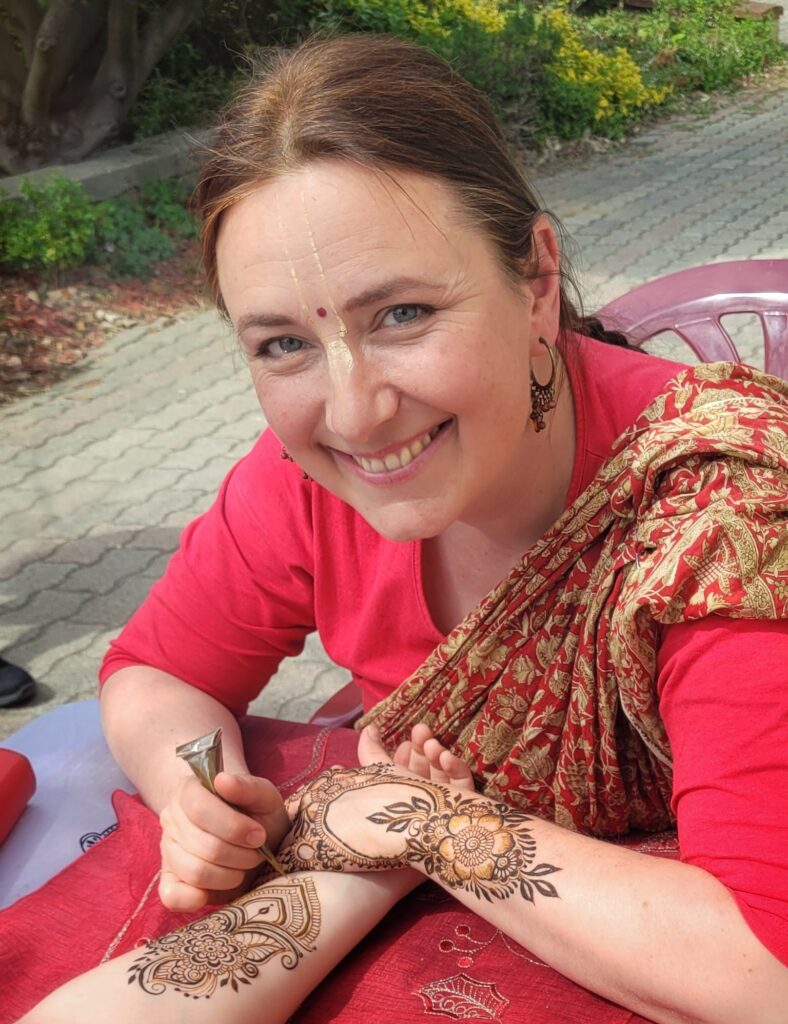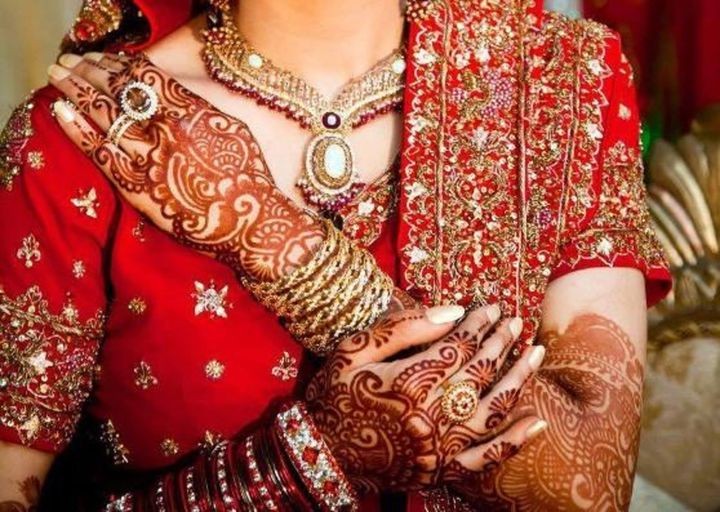Colours, shapes, emotions… The art of henna embraces all these and is deeply rooted in Eastern cultures. Few people know that henna painting has a tradition of more than 5000 years in Asia, Africa and the Middle East. Henna is a branch of the vaishnava arts and not only adorns, but also helps in self-realization, since it has a positive effect on our consciousness.
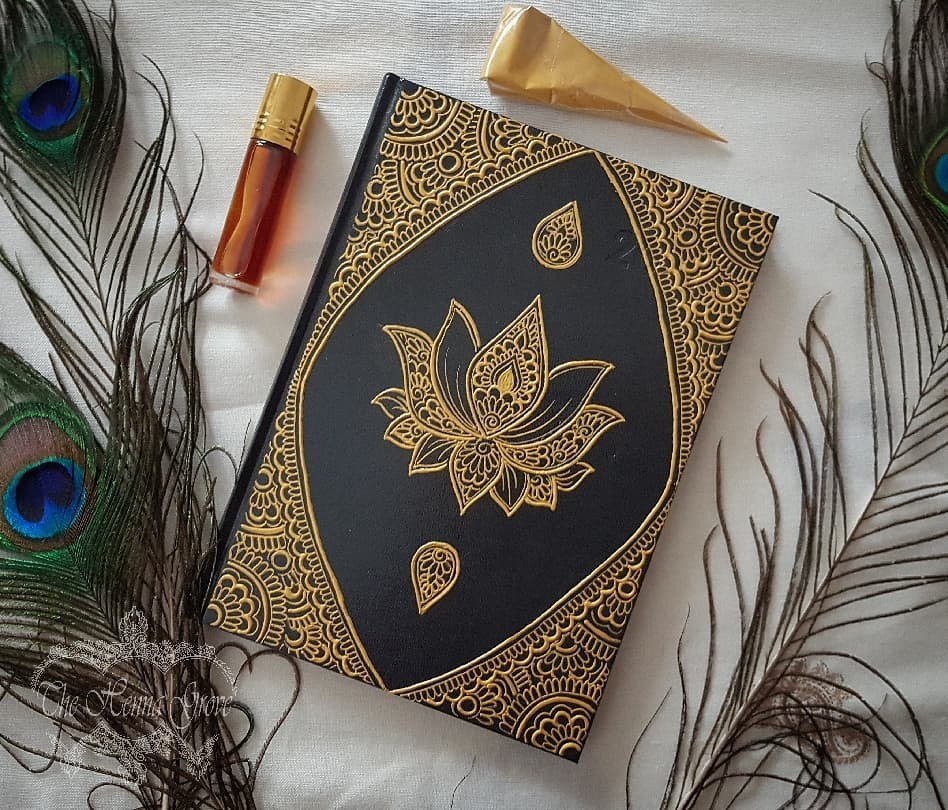
The secret of henna
Henna is perfect for body painting. The paint is obtained from the dried leaves of the henna bush. The leaves are finely ground first, then mixed with water and natural ingredients (lemon juice and eucalyptus oil). The painted figures decorate the body for weeks, which explains the popularity of this art. Many people try the chosen image or motif with henna before their final tattoo.
But henna is not only the embellishment of the body. Henna motifs can be applied on candles, diaries, windows, walls, or even bags and clothes. The works of henna-painter artist, Krishna-Valley resident Nisanta (known as The Henna Grove), are unique and impressive.
Mehndi on hands: The balance between spirituality and art
The application of henna to the skin is a temporary body painting, and is most popular in South Asia, the Middle East and North Africa, as well as among those who have left their homeland. It is most often used at weddings, where the patterns painted on the hands and feet are of spiritual origin, defenders, protectors, and bring luck.
The figures can be divided into three main groups by their forms: Arabic, Indian and African. Arabic figures usually depict larger floral motifs, since the Qur’an forbids the representation of animals. Indian figures are more detailed, with thin lines interwoven with floral and cashmere patterns that cover the entire upper body and the legs from the feet to the shins. African figures are more likely to represent larger, thicker geometric shapes.
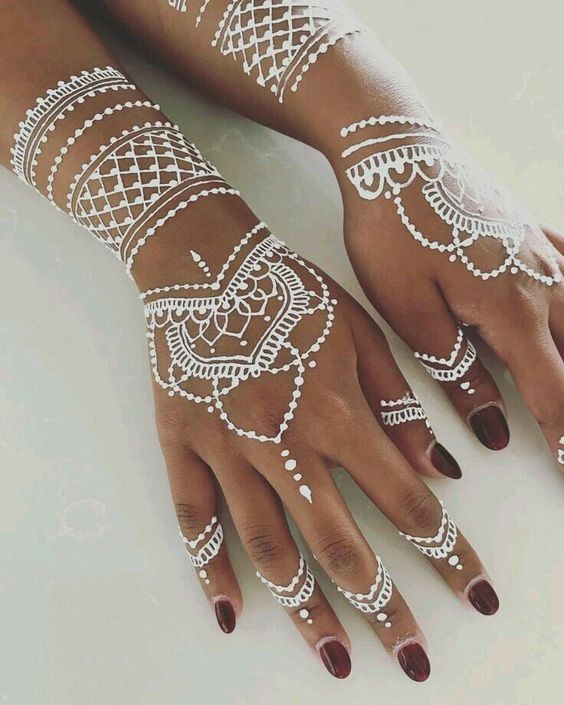
The origin of henna
The art of mehndi (henna painting) has been known throughout Asia and Africa for 5000 years, and has conquered Europe and America, too. Initially, henna was used for its cooling and healing effects, but later was applied to the skin in the form of increasingly sophisticated figures. Henna was used in ancient Persia, India and Egypt for cosmetic and healing purposes, such as hair dyeing, nail painting and making herb infusions.
Black henna: Myth and reality
It is important to mention that real henna is not black and does not cause wounds or blisters on the skin. The substance responsible for black stains is PPD (Para-Phenylenediamine), which is mixed either with henna or with other powder-like substances. PPD can be harmful to the human body, so it is important to check the components of henna prior to use.
Henna and celebrations
Henna plays a particularly important role at weddings in Pakistan, India, Bangladesh and Sudan. Brides are painted in a separate ceremony on the “night of the mehndi.” But not only fiancées, but also prospective husbands are sometimes decorated with henna. However, henna is not used exclusively on weddings, but also at birthday celebrations, baby birth, family gatherings or simply for celebrating togetherness.
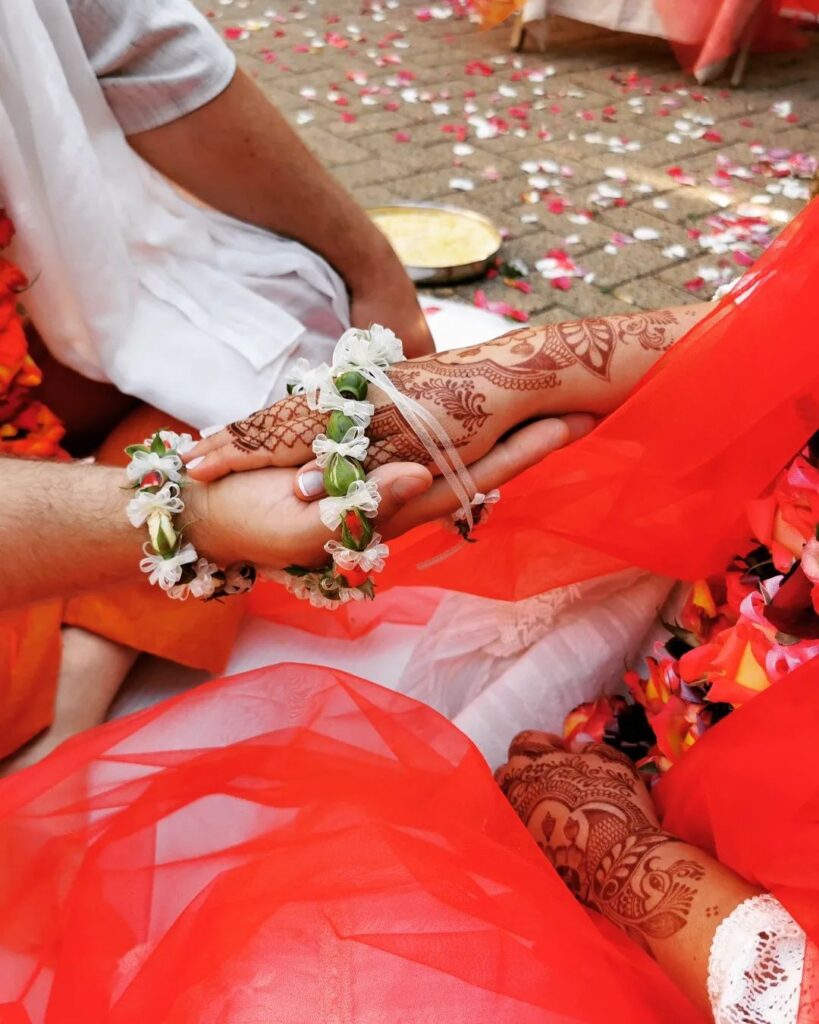
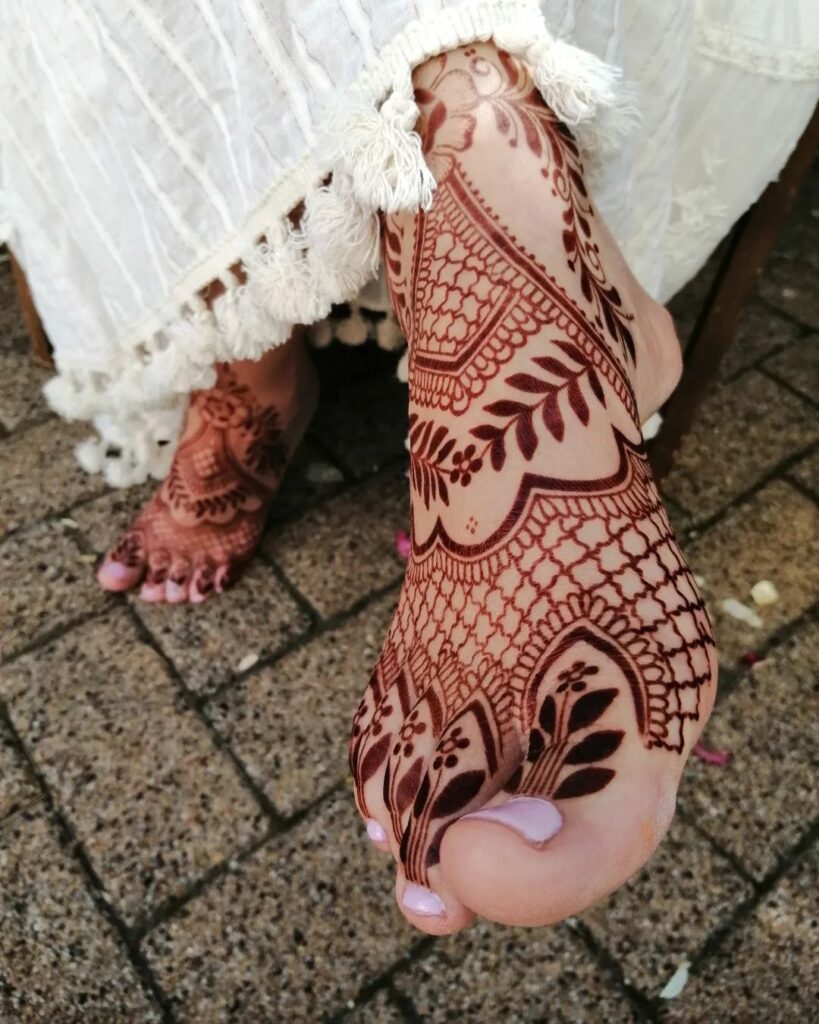
The deeper meaning of body painting
The art of henna body painting is not merely about decorating the body; deep meanings and symbols lie behind the patterns. Most of us don’t even know that these patterns go far beyond decorative beauty.
– Figures on the back of the hands: these figures mean defence and protection. The henna symbols protect us from adversities and negative energy.
– Difference between left and right hand: the figures formed on the right hand usually symbolize the male, the outgoing energies, while the figures painted on the left hand represent the female, the receptive energies. This is how henna expresses the balance between the sexes.
– Figures on the feet: these patterns symbolize our relationship with God, which connects us to the earth. The henna paintings on the feet are a kind of spiritual encounter with nature.
– Figures on the palm: they symbolize opening out and offering. Flowers and mandala motifs are placed on the palms of the hands, symbolizing the centre of life, the cycle of the universe and the inner truth.
– Deep meaning of symbols: Henna patterns often include nonfigurative symbols, animal figures, and even the signs of the zodiac. Each symbol has a unique meaning that represents life, happiness, hope, or loyalty to God.
Henna art is a creative and spiritual expression that allows people to wear their feelings, thoughts and beliefs on their bodies. Henna is thus not only a beautiful decoration, but also a tool that helps us express ourselves and connect with our own inner world.
Our Henna Artist: Nisanta
One of the most famous henna painting artists of our country is Nisanta. She has preserved Indian traditions and created a successful business from her hobby. Nisanta started her career in Krishna-Valley and is now making unique works of art.
She even makes sure that the henna gets on your skin is healthy and safe. She paints for weddings, festivals, and other events. She also decorates diaries and teaches the art of henna painting.
Nisanta’s works not only decorate the skin, but also bring joy to heart and soul.
